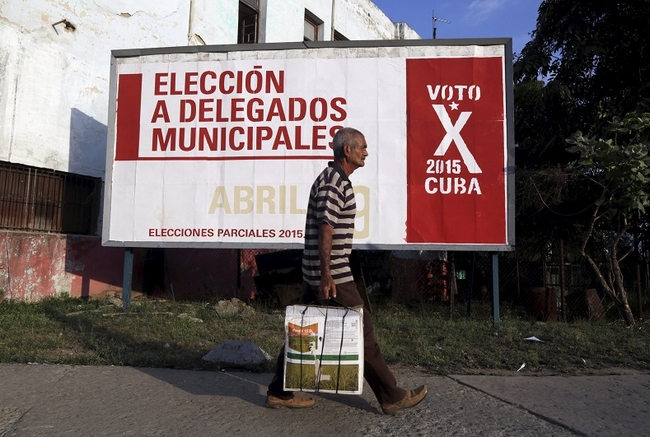Who are our delegates?
This article originally appeared in the Granma | Monday, 8 June 2015 | Click here for original article

Data from the National Electoral Commission on the delegates elected to Municipal Assemblies of Peoples Power
It is always important to know about the composition of delegates to Municipal Assemblies of Peoples Power elected every two and a half years, according to law, and although it is not always possible to tell by their characteristics whether their term will be better in comparison to that of their predecessors, it can and should give an idea of their ability to carry out the responsibilities of the position.
According to the National Electoral Commission (CEN), for the current term - the 16th since these institutions were established in 1976 - 12,586 delegates were elected - one per constituency, through direct and secret ballot by voters in every electoral district. 11,423 delegates were elected in the first round held April 19, and a further 1,166 in the second, which took place a week later.
On May 13, the municipal assemblies were formally constituted, with the newly elected delegates officially instated across all territories and their Presidents and Vice Presidents chosen.
According to the CEN, of the total representatives elected, 4,450 (34.99%) are women; 1,935 (15.37%) young people; with 6,674 (53.01%) reelected to their previously held positions as municipal delegates; 1,063 (8.44%) as presidents of peoples councils; 391 (3.10%) delegates to their respective provincial assemblies; and 220 (1.74%) as national deputies.
In regards to their level of education, the majority (90 %) are either pre-university (6,177) or university (5,162) graduates; 1,194 (9.48%) - high school; 48 (0.38%) - primary; with only 8 (0.06 %) - having reached sixth grade or below. Hundreds of our delegates are affiliated with military institutions.
In regards to demographic indicators: 7,376 (58.59 %) delegates are white, 2,127 (16.89%) black; and 3,086 (24.51%) mixed race. Concerning age groups: 21 are between 16 and 18 years old; 1,914 - 19 to 35; 1,098 - 36 to 40; 4,668 - 41 to 50; 3,468 - 51 to 60; and 1,420 over the age of 60.
With reference to occupations, 4,036 work in the service sector; 187 – sports; 26 – research; 122 – culture; 32 – press (written, radio, television); 601 – retired; 3 – belong to the Association of Combatants; 325 – homemakers; 54 – students; 601 small farmers; 257 cooperative members; 40 – workers of land in usufruct; 2 – representatives of religious institutions; 322 – self employed; 141 – members of the FAR; 421 – MININT members; 260 – civil defense; the remainder are classified as leaders of political, social and mass organizations, state organs, government and systems of Peoples Power, as well as business and administrative directors.
Among the mass organizations represented by delegates are the CTC, ANAP, FEU and FEEM – and community based groups - CDR, FMC and the Association of Combatants of the Cuban Revolution – while, 7,392 representatives are members of the Communist Party of Cuba and 857 the Young Communist League.






